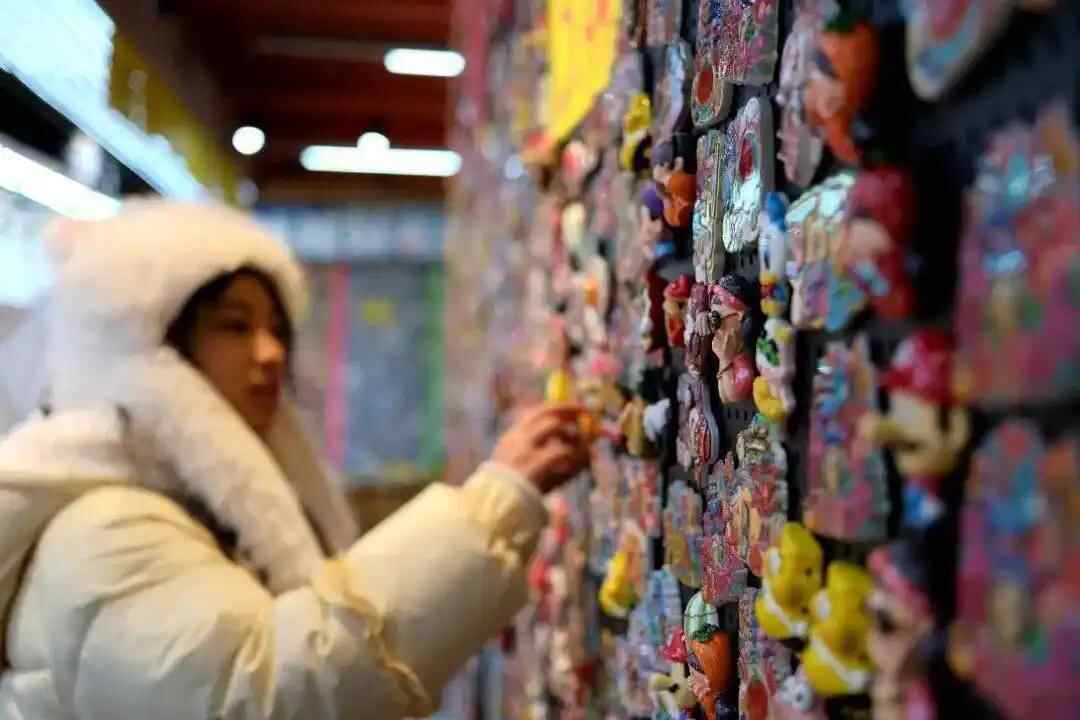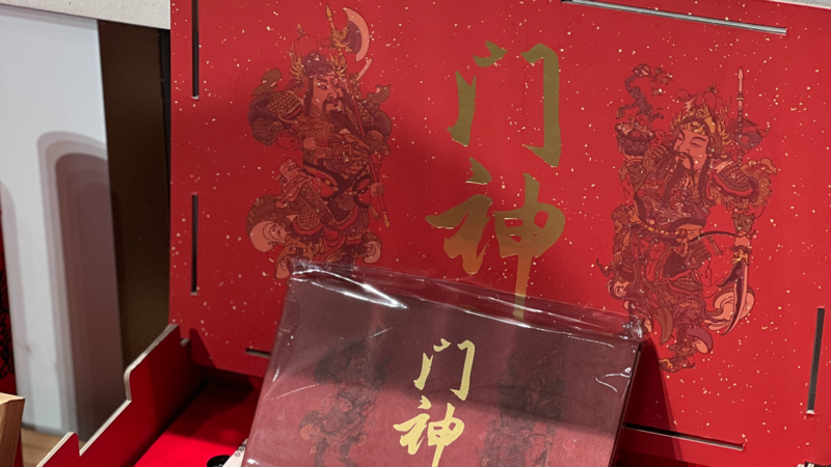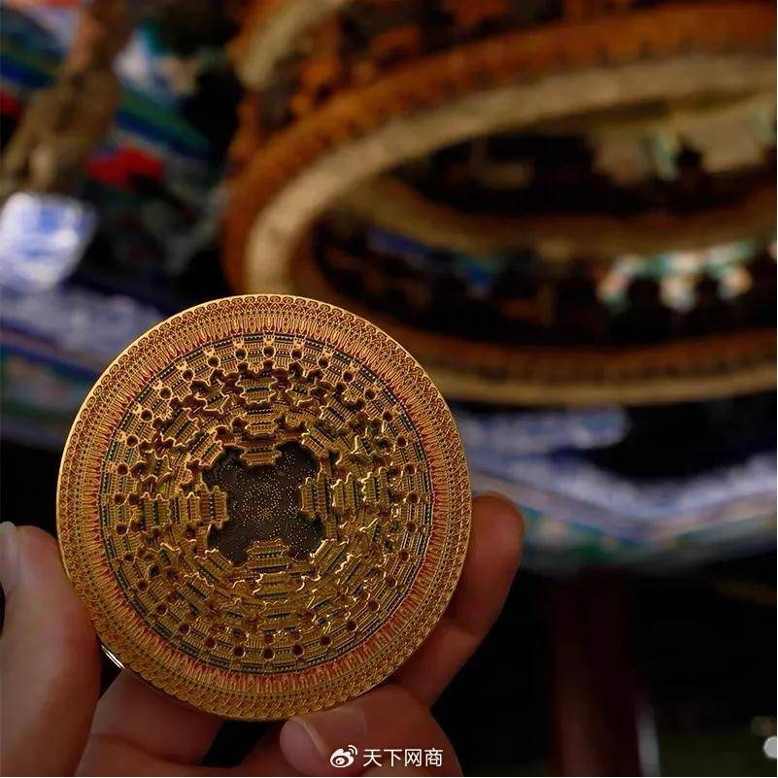
On March 11th, the Weibo topic "Fridge Magnet Craze Spurs Guangdong Factories to Double Orders" surged to the trending list, amassing over 3.9 million views by press time.

Once dismissed as "tacky and overpriced" at tourist sites, fridge magnets have transformed into highly sought-after cultural and creative collectibles among young consumers. The Palace Museum's "Forbidden City Ridge Beasts" magnets sell over 100,000 units per month, while the National Museum of China's phoenix coronet magnet has recorded an astonishing 530,000 sales in just four months. Other cultural hits, such as the Dunhuang Night Light and Jingdezhen's "Speechless Buddha" magnets, continue to emerge.

Data shows that China's fridge magnet sector reached a scale of 3.6 billion yuan in 2020, with an expected annual growth rate of around 10% in the coming years. This transformation is driven by the combined forces of evolving consumer demand, cultural IP expansion, and business innovation.

First, fridge magnets have become an ideal souvenir for cultural and travel memories, thanks to their "affordable price and compact size." Priced between 20 and 50 yuan, they are popular with a wide range of consumers. Their small dimensions make them convenient to carry and display, appealing to young travelers who use them as tangible mementos of their journeys.
Second, social needs and "emotional value" have become the driving forces behind the consumption of fridge magnets. For example, the National Museum of China's phoenix coronet magnet has been dubbed "Beijing's most coveted cultural souvenir," with consumers willing to queue for hours in the rain to get one. In Suzhou, AI-enhanced "Door Guardians" magnets blend traditional Taohuawu (or Peach Flower Yard) woodcut New Year paintings with modern technology, allowing users to tap them for a digital blessing and combining cultural heritage with interactive fun.
Third, the rising popularity of cultural tourism has sparked a surge in landmark- and museum-themed IP derivatives. The Beijing Ancient Architecture Museum's "Tiangong Cassion" fridge magnet, known for its exquisite craftsmanship and limited-edition status, sells out instantly upon release.

Once dominated by resin-based designs, fridge magnets now incorporate a variety of materials such as metal, wood, and liquid acrylic. The "Tiangong Cassion" magnet, for instance, features enamel detailing and glass lacquer techniques, while the Dunhuang Night Light magnet integrates projection lighting, enhancing both artistic appeal and functionality.
The supply chain has also evolved. While Yiwu once led the market with a low-cost, high-volume approach, factories in Zhongshan, Guangdong, and Cangnan, Wenzhou are now shifting toward original designs, creating a two-tier market of budget-friendly and high-end cultural magnets. The National Museum of China's phoenix coronet magnet, which meticulously replicates the intricate patterns of the Ming Dynasty Empress Xiaoduan's crown, sold 1,700 units within two hours of launch and exceeded 80,000 units in three months, driving total sales in the related product line past 10 million yuan.
(Source from Yangcheng Evening News, Beijing Daily, Suzhou Daily, and Global Netrepreneur)
一枚巴掌大的冰箱贴,如何撬动百亿文创市场?
3月11日,微博词条“冰箱贴火爆带动广东工厂转型订单翻倍”登上热搜榜,截至记者发稿前阅读量已破390.4万次。
曾经在景区被吐槽“又土又贵”的冰箱贴,如今摇身一变,成为年轻人争相收藏的文创产品。故宫博物院“紫禁城脊兽”冰箱贴月销超10万件,国家博物馆凤冠冰箱贴4个月狂卖53万件,敦煌小夜灯、景德镇“无语佛”等文创爆款层出不穷。
数据显示,2020年中国冰箱贴市场规模已达36亿元,预计未来几年年均增速将保持在10%左右。其逆袭背后,是消费需求、文化IP与商业创新的三重升级。
首先,冰箱贴凭借“亲民价格+轻量化收藏”属性,成为文旅记忆的绝佳载体。价格多集中在20-50元区间,普通消费者接受度高,而小巧的体积便于携带和展示,吸引年轻人将其作为旅行足迹的实体标记。
其次,社交需求与“情绪价值”成为冰箱贴消费的驱动力。例如,国家博物馆的凤冠冰箱贴被戏称为“北京最想拥有的文创”,消费者不惜冒雨排队数小时抢购;苏州推出的AI门神冰箱贴,将传统桃花坞木版年画与现代科技相结合,用户碰一碰即可收获吉祥祝福,兼具文化传承与趣味体验。
第三,文旅热持续升温,推动地标与文博IP衍生品爆发。例如北京古代建筑博物馆的天宫藻井冰箱贴,因限量发售和精美工艺,引发“上架即售罄”的抢购热潮。
早期以树脂为主的单一材质,如今已扩展至金属、木质、流沙亚克力等多元类型。例如,天宫藻井冰箱贴采用珐琅描色与玻璃漆工艺,敦煌小夜灯贴融合灯光投影技术,兼具艺术性与功能性。
产业链的升级同样显著。过去,义乌等地以低价走量模式主导市场;如今,广东中山、温州苍南等地的工厂转向原创设计,形成“低价走量”与“高端文创”两大分层。国博凤冠冰箱贴因精细还原明代孝端皇后凤冠纹样,上市两小时卖出1700个,三个月销量突破8万件,带动同系列文创销售总额超千万。
(羊城晚报·羊城派综合北京日报、苏州日报、天下网商等)
翻译|杨钧雅
英文审校|林佳岱
-
Poster丨Tourism Delegation from Tropical North Queensland, Australia, Visits China: Hopes China Will Become Its Largest International Market
2025-03-11 21:51:47 -
Exclusive interview: achievements in China-Africa cooperation provide model for Global South collaboration
2025-03-11 22:43:23 -
The stunning knife-ladder-climbing performance in Zhanjiang
2025-03-11 20:26:48 -
Vibrant Guangdong|Qianhai welcomes global youth under the 'Million Talents to South China Plan'
2025-03-11 12:00:50






